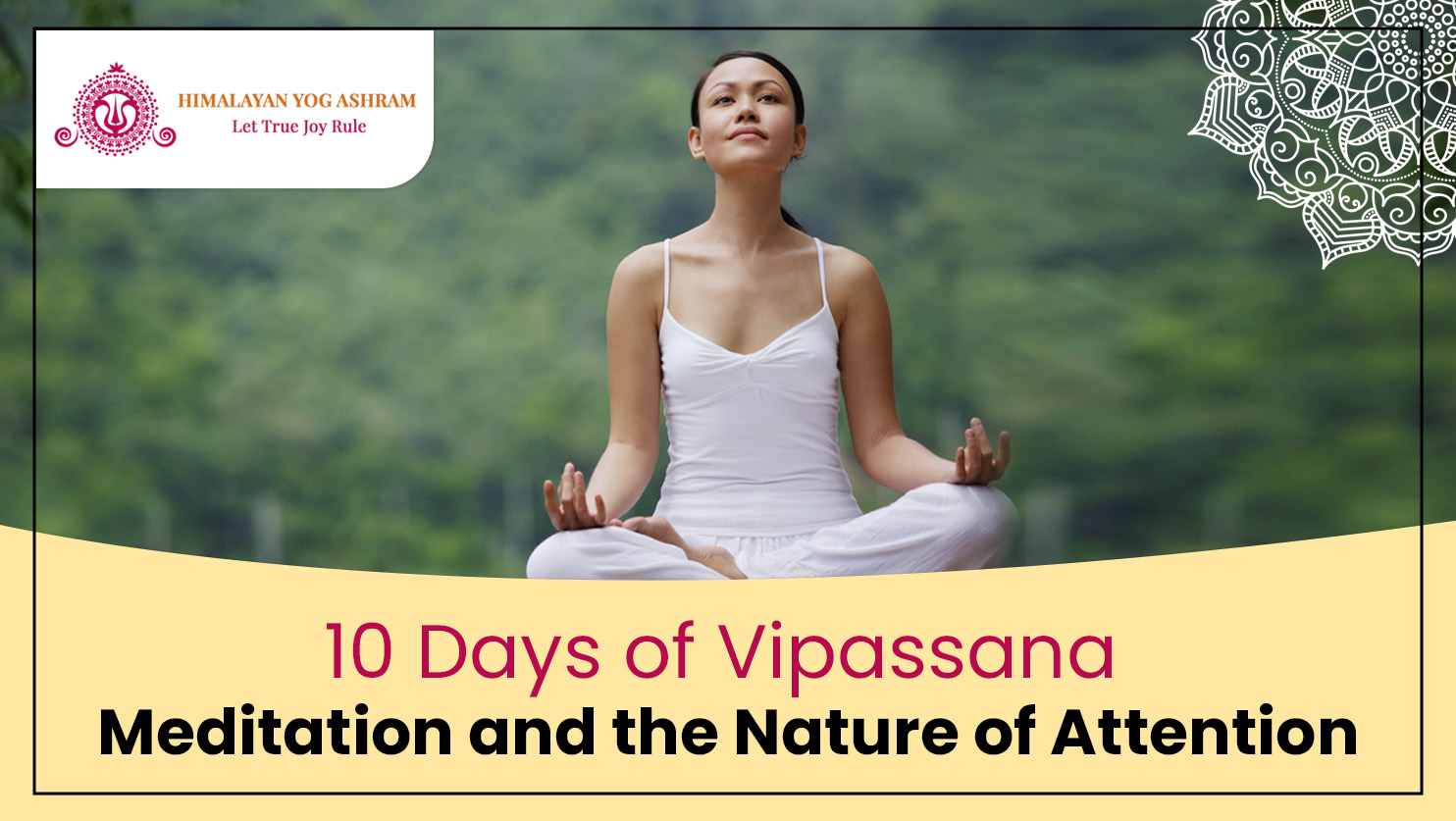Introduction to Vipassana Meditation
Vipassana is an ancient meditation technique that originated in India thousands of years ago. It is said to have been discovered and practiced by Gautam Buddha. The word “Vipassana” translates to “seeing things as they are.” It involves purifying yourself by observing your thoughts, feelings, and sensations. It aims to cultivate awareness of the present moment and develop insight into the true nature of reality.
Vipassana meditation is the perfect solution to all the problems in the world, and anyone can practice it freely, anytime, anywhere, without any dispute related to caste, community, or religion. Furthermore, meditation offers a lot of benefits to those who practice it. In this article, we will know in detail what is meditation, the ten days of Vipassana, and the nature of attention to the reality it can bring to the practitioner.
What is Vipassana Meditation?
Vipassanaa, which means” to see things as they are,” is an ancient meditation technique from India. Gautam Buddha himself had practiced it 2500 years ago. Then, through Vipassana practice, many people became free from the bondage of suffering and achieved high levels of achievement in almost all areas of life. This Silent meditation involves observing oneself without judgment and is believed to help reach enlightenment.
It is a practice that helps purify the mind by introspecting and recognizing the pain deeply rooted within us and removes the causes of pain and suffering from our mind. meditation helps to achieve peace, harmony, and balance by completely freeing the mind from suffering and all kinds is of negative thoughts and emotions. Vipassana is a way of life that a person of any religion, group or class can practice. It is not tied to any particular religion or group. Like normal meditation, it brings immense physical, mental, and spiritual benefits to your life.
Origin of Vipassana Meditation
Vipassana was discovered by Gautam Buddha (Siddhartha Gautama) during his search for truth and his spiritual practices. It is said that he practiced meditation in different ways for many years and eventually attained enlightenment by practicing meditation. After this, he taught the same practice throughout his life. Many disciples spent years teaching others how to use this technique to gain insight into the true nature of reality and freedom from suffering.
Later, he dedicated his life to teaching others how to use this method to understand the true essence of life and achieve freedom from suffering. In modern times, while Vipassana meditation is an integral part of almost all yoga and meditation practices, its practice may vary slightly from teacher to teacher. Most courses follow the same broad guidelines and require practitioners to remain within the course site for the entire ten days. They meditate for at least ten hours a day (with breaks).
Overview of 10 Days of Vipassana Meditation
Vipassana meditation courses last for ten days, during which participants immerse themselves in meditation and silence. You can join this course at various Vipassana centers across the globe, and many other non-center schools also conduct this program at multiple intervals. The technique of Vipassana is simple, yet it requires experienced teachers to teach its practice. It is an efficient way of knowing the true nature of reality, which gives a happy life full of mental peace and awareness.
Rules at Vipassana Meditation Course:
Before beginning Vipassana practice, all students are required to practice morality, which includes refraining from all actions that may harm others. The five principles of morality that practitioners follow before a ten-day Vipassana meditation practice are: to abstain from killing any living being, refrain from stealing, sexual misconduct, lying, and abstain from intoxicants. By following these rules, all mental impurities are removed, and the mind becomes calm. This calm and composed mind is necessary to move forward on the path of concentration and meditation.
Here is a general overview of the 10-day Vipassana Meditation:
Days 1-3: Anapana Meditation
The course begins with three days of Anapana meditation, where practitioners focus on developing concentration. It involves observing the flow of your natural breath to help you focus and become more aware. It helps the practitioner to concentrate on the sensation of breathing, i.e., the entry and exit of the breath into your nostrils. This exercise helps calm your mind, focus better, and increase your ability to be present in the moment. Also, it controls the unruly mind and creates the stability needed for deeper exploration (Samadhi) in the days to come.
Days 4-9: Insight through Vipassana
On the fourth day, participants begin to practice Vipassana meditation, i.e., systematically scanning their bodies to observe emotions and sensations. The goal is to observe these sensations without getting attached to them or trying to push them away. It will make your concentration so focused that you will be able to notice even very small and subtle sensations. Through sustained meditation, practitioners uncover the impermanent and selfless nature of these sensations, learn to break mental barriers and gain insight into the fundamental nature of existence. During these nine days, all students practice complete silence.
Day 10: Noble Silence and Reflection
The final day of the course is spent in noble silence, where participants reflect on their experiences before breaking the silence and sharing insights. The practitioners of silent meditation practice, then, may resume speaking and return to their normal form. The course ends on the morning of the eleventh day.
Conclusion
Vipassana meditation is a great way to develop inner peace and self-discovery. Through its practice, individuals can develop clarity of mind, encourage mindfulness, and free themselves from ignorance, desires, cravings, aversions, and suffering. By learning to observe the workings of the mind and body without judgment, individuals can uncover deep insights into the nature of existence and break free from the cycle of suffering. This ancient practice offers a practical approach to overcoming life’s challenges and finding lasting happiness and fulfillment.




